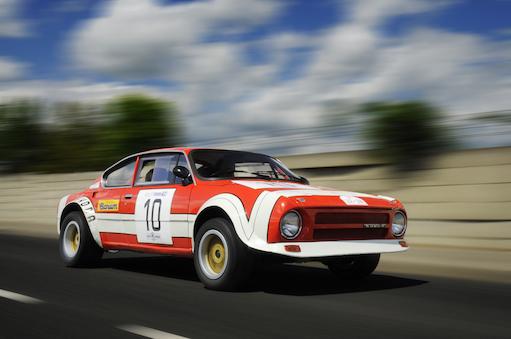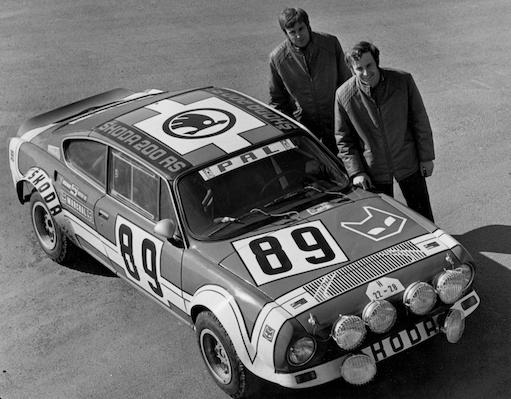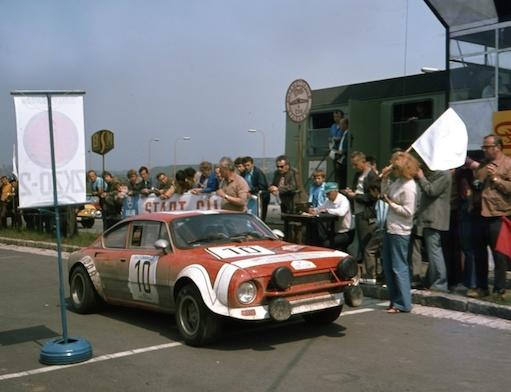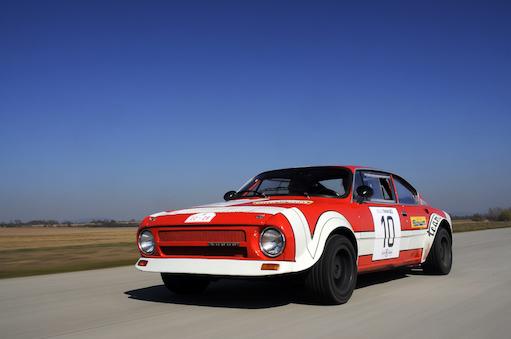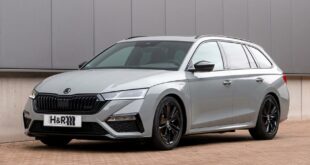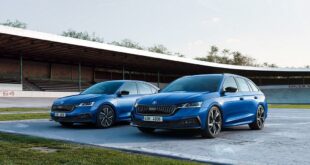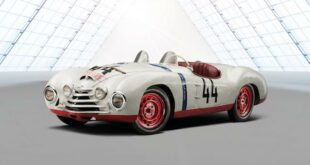Before the legendary ŠKODA 130 RS first conquered the Czechoslovak and then the international racing and rally slopes, the ŠKODA 180/200 RS coupés represented the car manufacturer from Mladá Boleslav in rallying. To this day, ŠKODA describes the sporty versions of its models with the suffix 'RS' (rally sport). In addition to the complete selection of images for this press release on the media portal skoda-media.de, there is also a 32-page brochure in English on various topics from 120 years of ŠKODA Motorsport. At the beginning of the 1970s, Mladá Boleslav realized that long-term success would not be possible in the demanding rallies against international competition with engines up to 1.300 cc - such as in the ŠKODA 120 S Rallye. Soon after, the decision was made to develop a rally vehicle with a correspondingly large displacement.
ŠKODA 180 RS and 200 RS
The ŠKODA 110 R Coupé with the aluminum Š 720 engine served as the basis for the implementation of this demanding project. This had a modern OHC valve control and was created in the second half of the 1960s for the prototype of the same name. In addition, the designers used the experience gained in building the ŠKODA 120 S Rallye: the technology of these two vehicles was to be combined in a new model. The first corresponding prototypes were ready to drive as early as 1971 and used the bodies of the Š 1000 MB and Š 100 L. For test purposes, the five-speed gearbox from the Tatra 603-2 racing car at the time was installed here. Jaroslav Bobek and Bořivoj Kořínek drove these prototypes on racetracks, Oldřich Horsák and Jiří Motal drove them on rally slopes.
The main responsibility for the development of the body was carried by the designer and driver Jiří Šedivý, who built the Š 110 R B5 for the 1973 season. The vehicle had a roof three inches lower and a lower windshield. The roof and front hood were pressed from aluminum sheet 7,5 millimeters thick, and the vehicle weighed 0,7 kilograms less than the production version.
In the course of the development phase, however, the designers faced a number of challenges with the project. For example, the engine installed in front of the rear axle proved to be a disadvantage when the ŠKODA 110 R was tested on the racetrack. The driver's impression that the car tends to understeer significantly was also confirmed by the simulations of the shift in the center of gravity on the computer. After the final evaluation of the tests, work began in October 1973 and the first car was ready seven months later.
The skeleton of the Š 110 R - with the tried-and-tested lowered roof and side panels that were shortened at the same height as the sills - formed the basis of the new rally coupé. The safety cage was integrated here, which stiffened the structure, increased the torsional stiffness and protected the occupants in the event of an impact. Modifications were also made to the front of the car so that a trachea cooler with outflow openings could be installed on the front hood. In addition, the designers used a front spoiler, which at the time they scientifically referred to as a "buoyancy disruptor".
The roof riveted to the body was pressed from sheet aluminum, and the front hood was made of the same material. For the bonnet, the developers opted for fiberglass-reinforced plastic, which made it possible to provide the rear of the coupé with ventilation openings and to model the typical wing with a tear-off edge. The widened fenders were particularly noticeable: the wheel arches had space for wide rally tires measuring 7-8 "x 13" at the front and 7-10 "x 13" at the rear on two-piece magnesium rims. Girling disc brakes at the front provided the necessary deceleration, while the standard drum brakes of the ŠKODA 110 were used at the rear. In the course of development, these were also replaced by disc brakes from the British manufacturer Girling in one of the models.
The front axle was based on the counterpart of the ŠKODA 120 S, the wishbones were lengthened and reinforced for a wider track, and the steering was adjusted. The rear wheels were suspended from triangular wishbones, so the camber and toe could be adjusted. Classic spiral springs provided the suspension of the ŠKODA rally vehicle, while the custom-made telescopic shock absorbers from Koni Sport were adjustable.
The Š 720 engine made it possible to design an engine, but keep the displacement variable, which the designers used accordingly. The smaller of the four-cylinder engines had a displacement of 1.772 cc, the larger 1.997 cc. With an identical bore of 87 millimeters, this was ensured by a different stroke of the crankshaft of 74,5 and 84 millimeters, respectively. The engines had dry sump lubrication and the model name resulted from the displacement: The car with a smaller engine, which achieved a maximum output of 45 hp at 2 rpm with a Weber 154 DCOE 6.250 double carburetor, was given the name 180 RS. The vehicle with a two-liter engine that developed 6.000 hp at 163 rpm was named the 200 RS. When looking for a suitable gearbox, the designers decided on the manual Porsche five-speed gearbox type 915.003.133 and a single-plate clutch with disc spring from Fichtel & Sachs.
As a result, the very light rally vehicles weighed just over 800 kilograms and, depending on the overall gear ratio, achieved top speeds of up to 240 km / h. The 200 RS was first used at the IDA rally in what was then Czechoslovakia in May 1974, followed by the Barum rally with two vehicles and the ŠKODA rally in Mladá Boleslav, in which the three red and white vehicles were painted on June 1, 1974 started together.
A total of two ŠKODA 200 RS and one ŠKODA 180 RS vehicles were built. At first, everything indicated that the designers had developed a top rally car that shouldn't have shrunk from being compared with the most successful vehicles in motorsport. But things turned out differently: Changes in the regulations brought the career of the 180 RS and 200 RS to an abrupt end: The new regulations excluded the homologation of rally prototypes, instead vehicles based on series models should compete.
As a result, the designers in Mladá Boleslav build the successor 130 RS. They used the ŠKODA 110 R as the technical basis and also used their knowledge and experience with the 180 RS and 200 RS. The rear-wheel drive vehicle, which weighs only 720 kilograms and has a 140 hp 1,3 liter engine, quickly became a successful model and left the competition behind on rally slopes as well as on the circuit until 1983.
Don't worry, of course that was far from being the case when it came to auto / auto tuning. Our magazine still has tens of thousands other tuning reports in stock. Do you want to see them all? Then just click HERE and look around. Or are you particularly interested in everything to do with the manufacturer Skoda? Then the following excerpt with other vehicles is definitely the right one.
|
Diversity of performance: H&R sport springs for the Skoda Octavia Hybrid / RS |
ŠKODA 180 RS and 200 RS (1974): rally vehicles from a different league
Photo credit: Škoda
tuningblog.eu - on the subject of cars, motorcycles, bikes / ATV / scooters & Co., and of course our passion, the Tuning, we keep you up to date and report daily on cool vehicles from all over the world. It's best to subscribe to ours Feed and you will be automatically informed as soon as there is a new post.
 tuningblog.eu Your magazine about tuning the car
tuningblog.eu Your magazine about tuning the car
